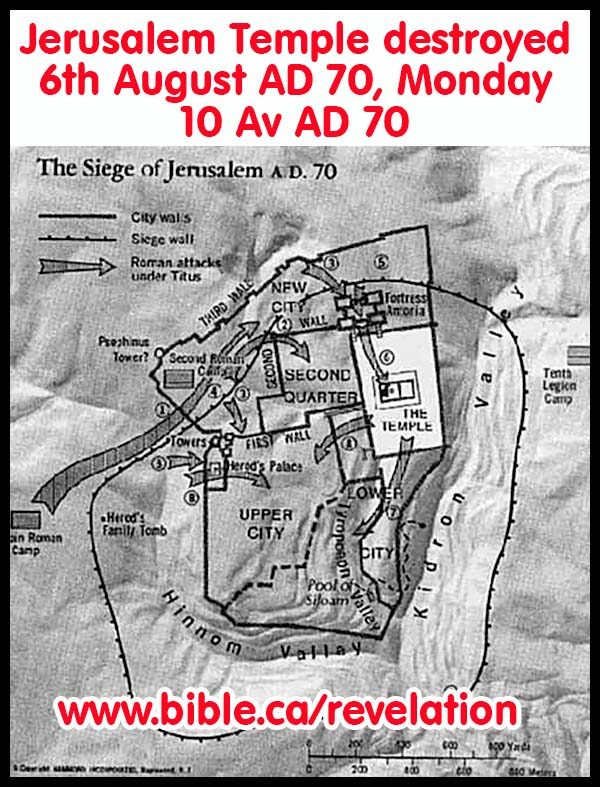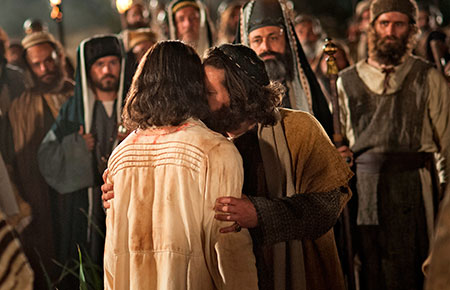The Lord confronted the Pharisees and Sadducees at the Temple on Monday. After He cast out the moneychangers, the temple hierarchy tried to home in on Moses relating to the temple. Jesus cut it short when He told them: "Your house is left unto you desolate." Here was Jehovah, the God of the Jews and of Moses and of the temple, walking out of His temple. He never returned. He had told them they had turned His Father's house into a den of thieves the first time He cleansed the temple. This time, He told them they had turned His house into a den of thieves. Finally, He told them that because of their sins, they had turned their own house into a den of thieves; He withdrew His acceptance of His temple, and it was ripe to be destroyed.On Tuesday, He called the twelve to Him and gave what has been called the Olivet Discourse since they were on the Mount of Olives. The fullest account in the New Testament is in Matthew 24, but the best account is found in J.S. Matthew 24 found int the Pearl of Great Price which is: An extract from the translation of the Bible as revealed to Joseph Smith the Prophet in 1831: (Matthew 23:39 and chapter 24.) And Jesus went out and departed from the temple; and his disciples came to him, for to hear him, saying: Master, show us concerning the buildings of the temple, as thou hast said—They shall be thrown down, and left unto you desolate. And Jesus said unto them: See ye not all these things, and do ye not understand them? Verily I say unto you, there shall not be left here, upon this temple, one stone upon another that shall not be thrown down. (J.S. Matthew 1: 2-3) Joseph Smith's translation of the Matthew text clarifies that there were 2 questions the Apostles asked, and Jesus answered both. Christians have struggled for years trying the understand the timeline as if it were 1 question. Tell us when shall these things be which thou hast said concerning the destruction of the temple, and the Jews; and what is the sign of thy coming, and of the end of the world, or the destruction of the wicked, which is the end of the world? (JS Matthew 1: 4)
The first part of the discourse centers on the near future and the destruction of the temple.
 When you, therefore, shall see the abomination of desolation, spoken of by Daniel the prophet*, concerning the destruction of Jerusalem, then you shall stand in the holy place; whoso reads let him understand.
When you, therefore, shall see the abomination of desolation, spoken of by Daniel the prophet*, concerning the destruction of Jerusalem, then you shall stand in the holy place; whoso reads let him understand.Then let them who are in Judea flee into the mountains; Let him who is on the housetop flee, and not return to take anything out of his house. Neither let him who is in the field return back to take his clothes.
And wo unto them that are with child, and unto them that give suck in those days.
Therefore, pray ye the Lord that your flight be not in the winter, neither on the Sabbath day.
For then, in those days, shall be great tribulation on the Jews, and upon the inhabitants of Jerusalem, such as was not before sent upon Israel, of God, since the beginning of their kingdom until this time; no, nor ever shall be sent again upon Israel.
All things which have befallen them are only the beginning of the sorrows which shall come upon them.
And except those days should be shortened, there should none of their flesh be saved; but for the elect’s sake, according to the covenant, those days shall be shortened.
This is the first part of Jesus' answer dealing with the immediate future of Jerusalem, the Jews, and the Temple. Because the Jews saw the temple as a holy place, when Roman legions entered the city, they ran there. But the temple was no longer protected by Jehovah. Therefore, the Jews at the temple site were slaughtered by the hundreds.
Disciples of Jesus had been told to flee to a neighboring town, Pella, as their holy place. It was this flight to which Jesus was referring when he told them to go immediately and not go back. History tells us that the early Christian Jews in Pella were spared and survived the tribulation of the Roman siege.
Tomorrow, I will deal with the second part of Christ's answer: the last days.
*Abomination of desolation
Daniel spoke prophetically of a day when there would be “the abomination that maketh desolate” (Dan. 11:31; 12:11), and the phrase was recoined in New Testament times to say “the abomination of desolation, spoken of by Daniel the prophet” (Matt. 24:15).
Conditions of desolation, born of abomination and wickedness, were to occur twice in fulfillment of Daniel’s words. The first was to be when the Roman legions under Titus, in A.D. 70, laid siege to Jerusalem (Matt. 24:15; JS—M 1:12).
Speaking of the last days, of the days following the Restoration of the gospel and its declaration “for a witness unto all nations,” our Lord said: “And again shall the abomination of desolation, spoken of by Daniel the prophet, be fulfilled” (JS—M 1:31–32). That is, Jerusalem again will be under siege.
In a general sense, abomination of desolation also describes the latter-day judgments to be poured out upon the wicked wherever they may be. And so that the honest in heart may escape these things, the Lord sends His servants forth to raise the warning voice, to declare the glad tidings of the Restoration, lest “desolation and utter abolishment” come upon them. The elders are commanded to reprove “the world in righteousness of all their unrighteous and ungodly deeds, setting forth clearly and understandingly the desolation of abomination in the last days” (D&C 84:114, 117; 88:84–85).
Abomination of desolation (churchofjesuschrist.org)
























